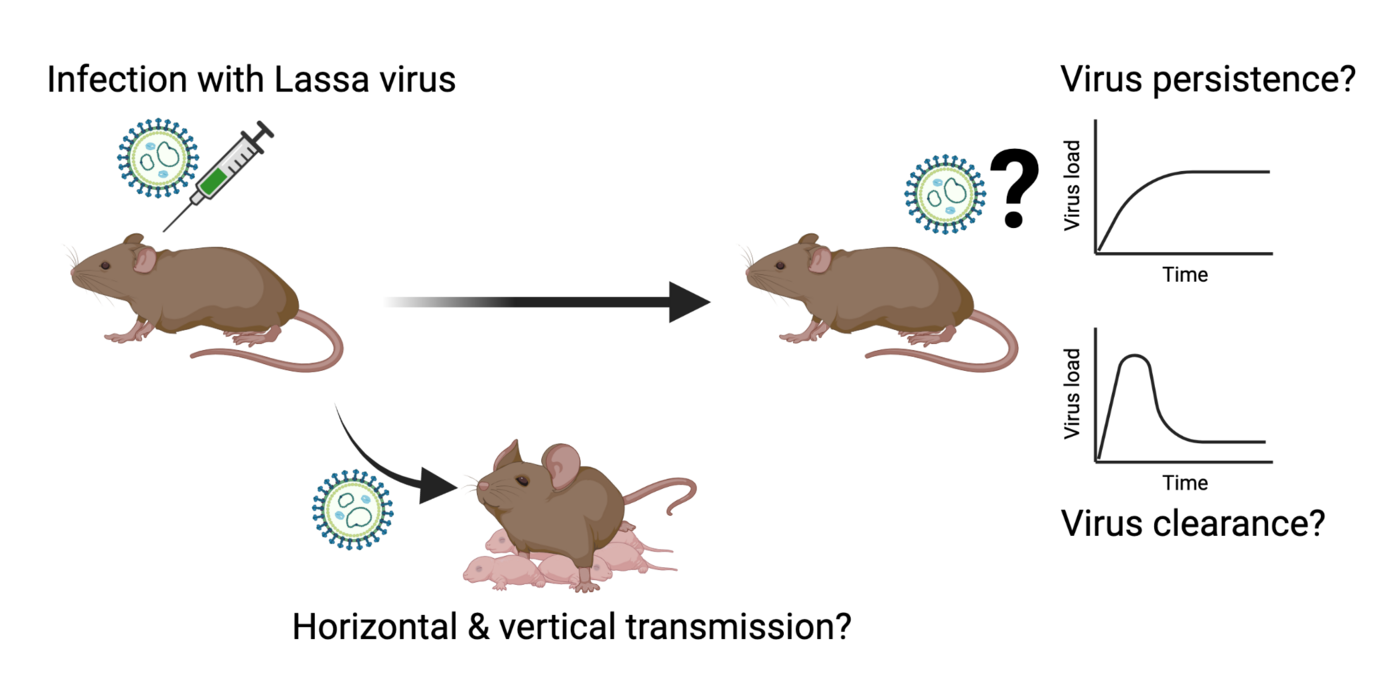Lassa virus immunology in the natural host, Mastomys natalensis
Lassa virus (LASV) outbreaks are primarily driven by zoonotic transmission from infected rodents to humans. It is therefore crucial to understand the virus dynamics and transmission patterns in the natural rodent reservoir to establish effective preventive measures and accurately predict LASV outbreaks. However, no adequate data exist on the mode of transmission (vertical, perinatal, in adulthood, sexual) of LASV among the natural host population (Mastomys natalensis), the period of infectivity (persistent for life or limited) and the relation between rodent density and the prevalence of the virus in the rodent population. These parameters have dramatic effects on the outcome of ecological disease models. Knowing how a virus is transmitted is crucial to develop useful models that can predict how, how fast and when the infection will spread in a host population.
We investigate the viral dynamics in M. natalensis following the infection with LASV and related arenaviruses, analyzing virus loads in body fluids and organs over time. Furthermore, we aim to assess transmission patterns between infected individuals and exposed contacts (Figure 1). The second objective of this project is the characterization of the host immune response following arenavirus infection. We use a variety of tools to identify host factors that are important for virus clearance or the development of persistent infections.




![[Translate to English:] [Translate to English:] Logo DFG](/fileadmin/media/Allgemeines_und_Platzhalter/Logo/Logo_DFG.png)
![[Translate to English:] [Translate to English:] Logo DZIF](/fileadmin/media/Das_Institut/Kooperationen/Logo_DZIF_01.png)
![[Translate to English:] [Translate to English:] Logo Leibniz Gemeinschaft](/fileadmin/media/Das_Institut/Kooperationen/Logo_Leibniz_Gemeinschaft.png)
![[Translate to English:] [Translate to English:] Logo Jürgen Manchot Stiftung](/fileadmin/media/Allgemeines_und_Platzhalter/Logo/Logo_Juergen_Manchot_Stiftung.png)





